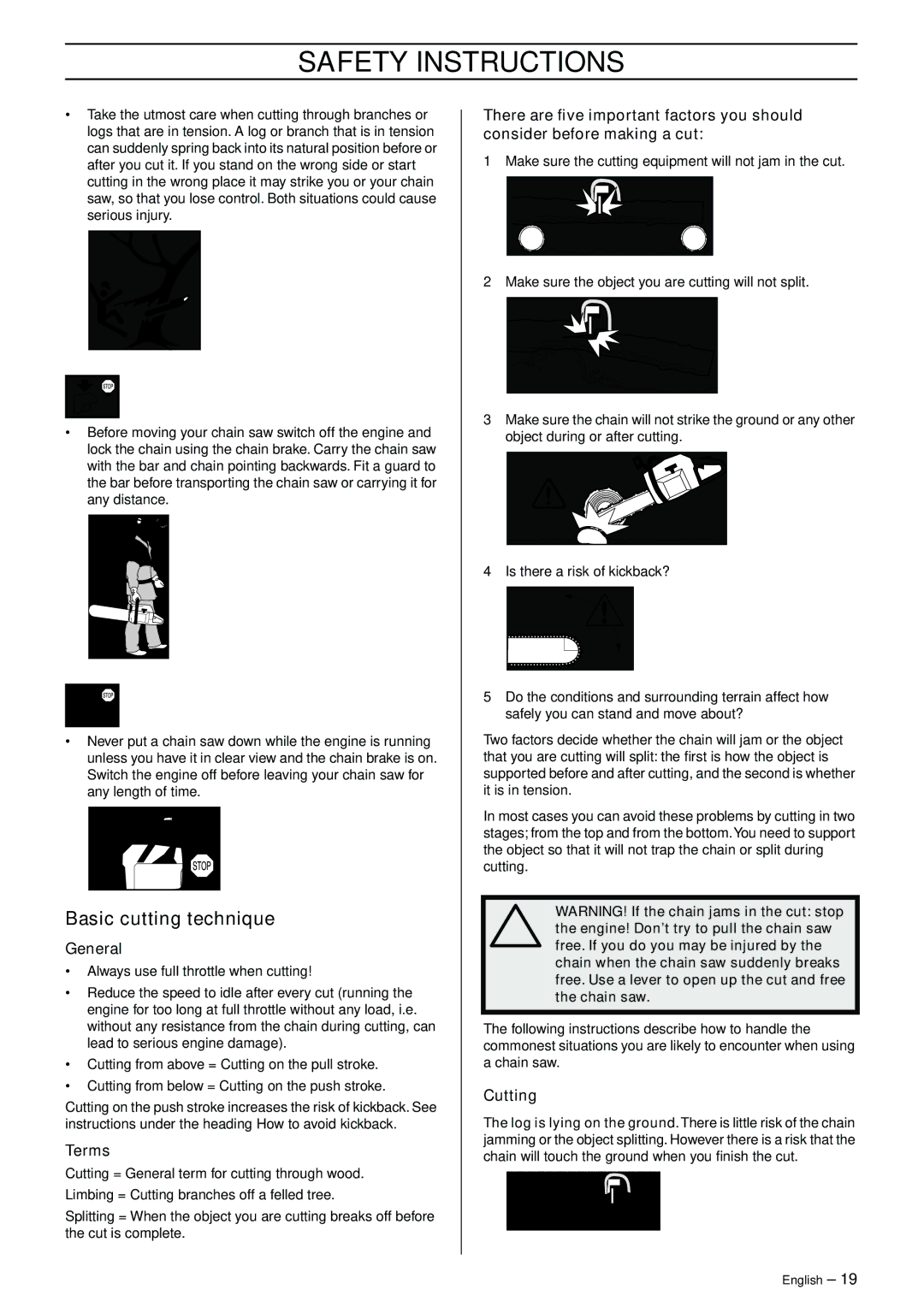CS 2141 EPA II, CS 2145 EPA II, CS 2150 EPA I specifications
The Jonsered CS 2150 EPA I, CS 2145 EPA II, and CS 2141 EPA II are premium chainsaws engineered for both professional users and serious enthusiasts. These models exemplify Jonsered's commitment to power, efficiency, and user-friendly design, making them ideal for a variety of cutting tasks, from felling trees to trimming branches.The Jonsered CS 2150 EPA I is a robust chainsaw that offers a powerful engine combined with advanced features. It boasts a 50.2 cc engine that delivers exceptional cutting performance while adhering to strict EPA emissions standards. The chainsaw is equipped with the X-Torq engine technology, which significantly reduces fuel consumption and emissions, enabling users to work longer while minimizing environmental impact. Additionally, the CS 2150 features a high chain speed of 22.3 m/s, allowing for swift and clean cuts.
The CS 2145 EPA II further enhances performance with its lightweight design, making it easy to maneuver for prolonged use without fatigue. Powered by a 45.7 cc engine, it combines efficiency with raw power, providing reliable performance for both professionals and homeowners. The inclusion of an easy-start system means that users can start the saw with minimal effort, which is especially advantageous during colder weather or when working in challenging environments. Its validated safety features, including a chain brake and low kickback bar, ensure user protection during operation.
The CS 2141 EPA II offers a perfect balance of power and manageability. With a smaller 40.9 cc engine, it is particularly suited for users looking for an efficient saw that doesn't compromise on performance. The lightweight design allows for easy handling, particularly in dense and difficult terrain. Like the other models, it utilizes the X-Torq engine technology, which ensures reduced emissions and optimal fuel efficiency. Its precise design and ergonomic handle make it comfortable for extended periods of use, catering to both professional loggers and landscape maintenance users.
Each of these models shares characteristics such as an efficient air filtration system, which prolongs engine life by keeping dirt and debris out. In addition, they are designed with vibrations dampening technology, reducing fatigue for the user. The easy access to the filter and spark plug simplifies maintenance, ensuring the chainsaws remain in peak condition.
In conclusion, the Jonsered CS 2150 EPA I, CS 2145 EPA II, and CS 2141 EPA II represent a solid lineup of chainsaws that combine power, efficiency, and safety. With advanced technologies and thoughtful design, they cater to a wide range of cutting needs, making them indispensable tools for anyone serious about their work in forestry, landscaping, or yard maintenance.

